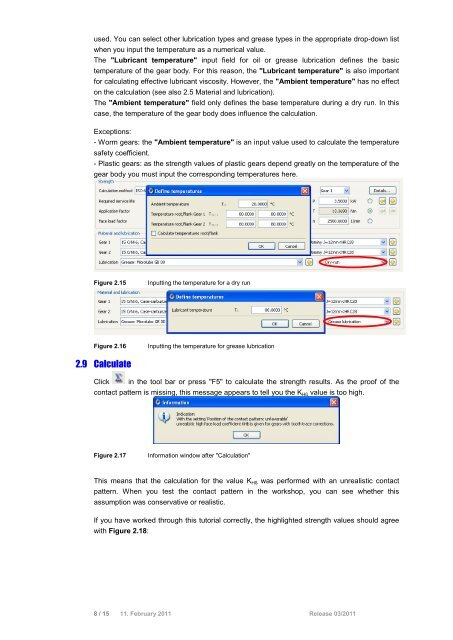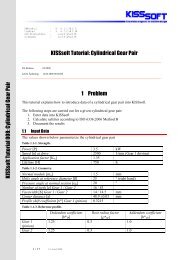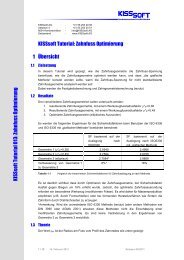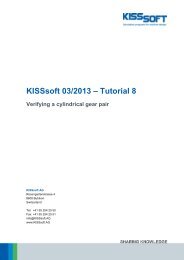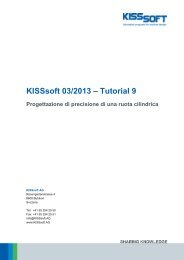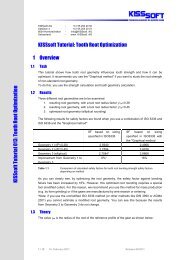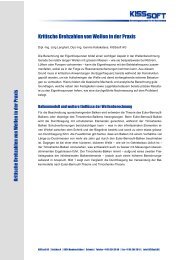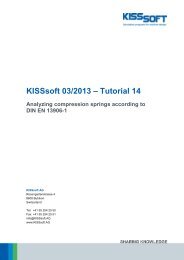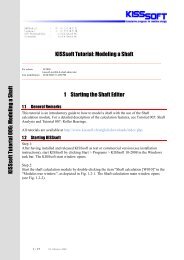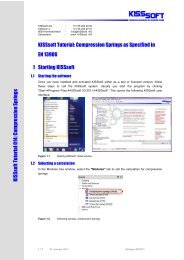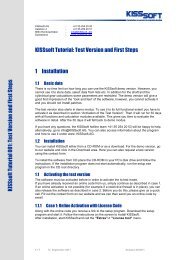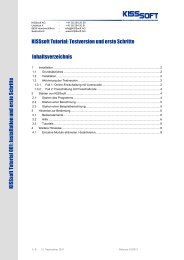KISSsoft Tutorial: Cylindrical Gear Pairs 1 Task ... - KISSsoft AG
KISSsoft Tutorial: Cylindrical Gear Pairs 1 Task ... - KISSsoft AG
KISSsoft Tutorial: Cylindrical Gear Pairs 1 Task ... - KISSsoft AG
Create successful ePaper yourself
Turn your PDF publications into a flip-book with our unique Google optimized e-Paper software.
used. You can select other lubrication types and grease types in the appropriate drop-down list<br />
when you input the temperature as a numerical value.<br />
The "Lubricant temperature" input field for oil or grease lubrication defines the basic<br />
temperature of the gear body. For this reason, the "Lubricant temperature" is also important<br />
for calculating effective lubricant viscosity. However, the "Ambient temperature" has no effect<br />
on the calculation (see also 2.5 Material and lubrication).<br />
The "Ambient temperature" field only defines the base temperature during a dry run. In this<br />
case, the temperature of the gear body does influence the calculation.<br />
Exceptions:<br />
- Worm gears: the "Ambient temperature" is an input value used to calculate the temperature<br />
safety coefficient.<br />
- Plastic gears: as the strength values of plastic gears depend greatly on the temperature of the<br />
gear body you must input the corresponding temperatures here.<br />
Figure 2.15<br />
Inputting the temperature for a dry run<br />
Figure 2.16<br />
Inputting the temperature for grease lubrication<br />
2.9 Calculate<br />
Click in the tool bar or press "F5" to calculate the strength results. As the proof of the<br />
contact pattern is missing, this message appears to tell you the K Hß value is too high.<br />
Figure 2.17<br />
Information window after "Calculation"<br />
This means that the calculation for the value K Hß was performed with an unrealistic contact<br />
pattern. When you test the contact pattern in the workshop, you can see whether this<br />
assumption was conservative or realistic.<br />
If you have worked through this tutorial correctly, the highlighted strength values should agree<br />
with Figure 2.18:<br />
8 / 15 11. February 2011 Release 03/2011


